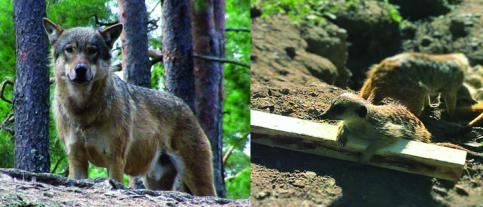Behavioral responses of meerkats (Suricata suricatta) and Eurasian wolves (Canis lupus) to the odor of mammalian blood and a blood odor component

For members of the mammalian order carnivora the sense of smell is important for social communication and hunting. The animals use chemical signals for both intra- and interspecific means of communication (Ralls 1971, Mykytowycz 1972, Doty 1986). Different types of bodily fluids such as urine and feces contain these signals (Mykytowycz 1972). The predator-prey relation also involves odor signals. Prey species avoid the odors of predators as well as the odors of conspecifics that are injured or stressed. Predators on the other hand use the odors of their prey to locate them (Cocke & Del Thiessen 1986).
In the present study, Eurasian wolves (Canis lupus) and meerkats (Suricata suricatta) are the carnivore species that are under consideration. In both species the sense of smell is highly developed and important for social communication and hunting (Estes 1991, Mech & Boitani 2010, Doty 2015). As wolves in their natural environment have only few, if any natural enemies they are so-called apex predators (Wallach et al. 2015), the odor of meat and blood should therefore be attractive to them. In contrast, the meerkats are a mesopredator, that is, a carnivore species that has a small body size of less than 2 kg and is both a predator and a prey (Conner & Morris 2015). The meerkats are prey for various terrestrial and aerial predators (Clutton‐Brock el al. 1999). Thus, they might be intimidated by the odor of blood. However, as the meerkats also hunt for prey, the odor of blood might be an indicator wounded prey and therefore be attractive to them (Manser et al. 2002, Zöttl et al. 2012).
Responsible for this page:
Director of undergraduate studies Biology
Last updated:
05/01/17
